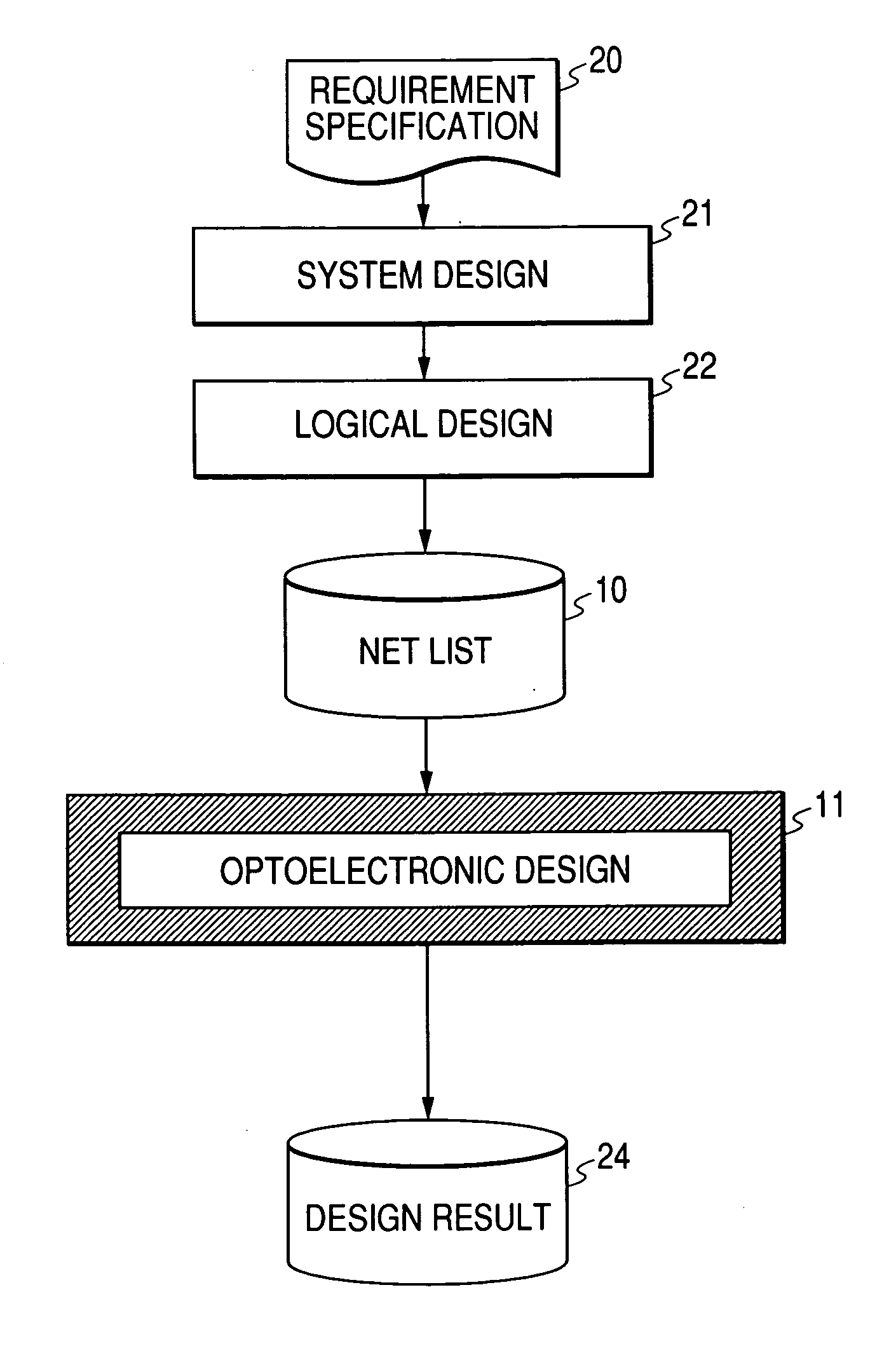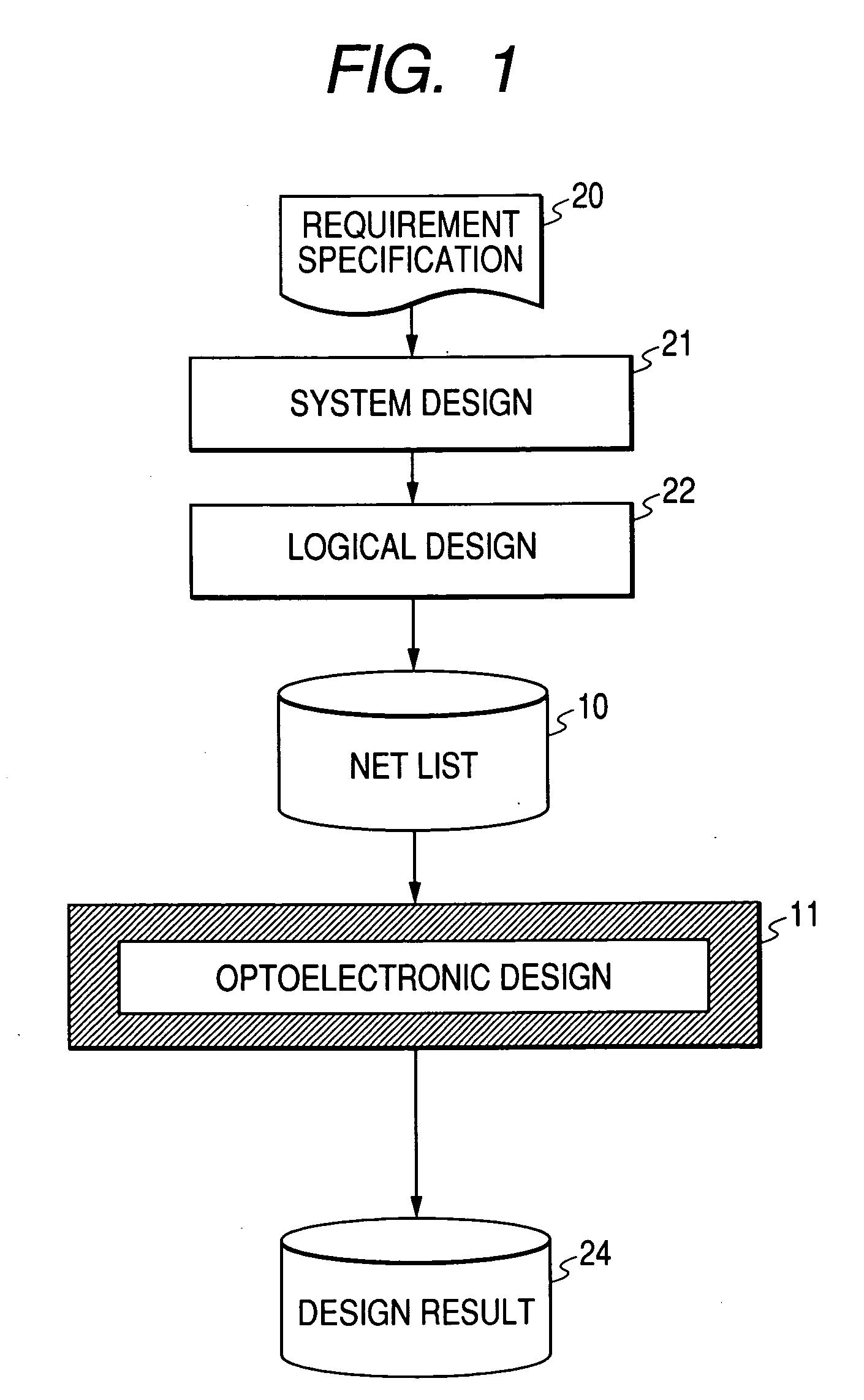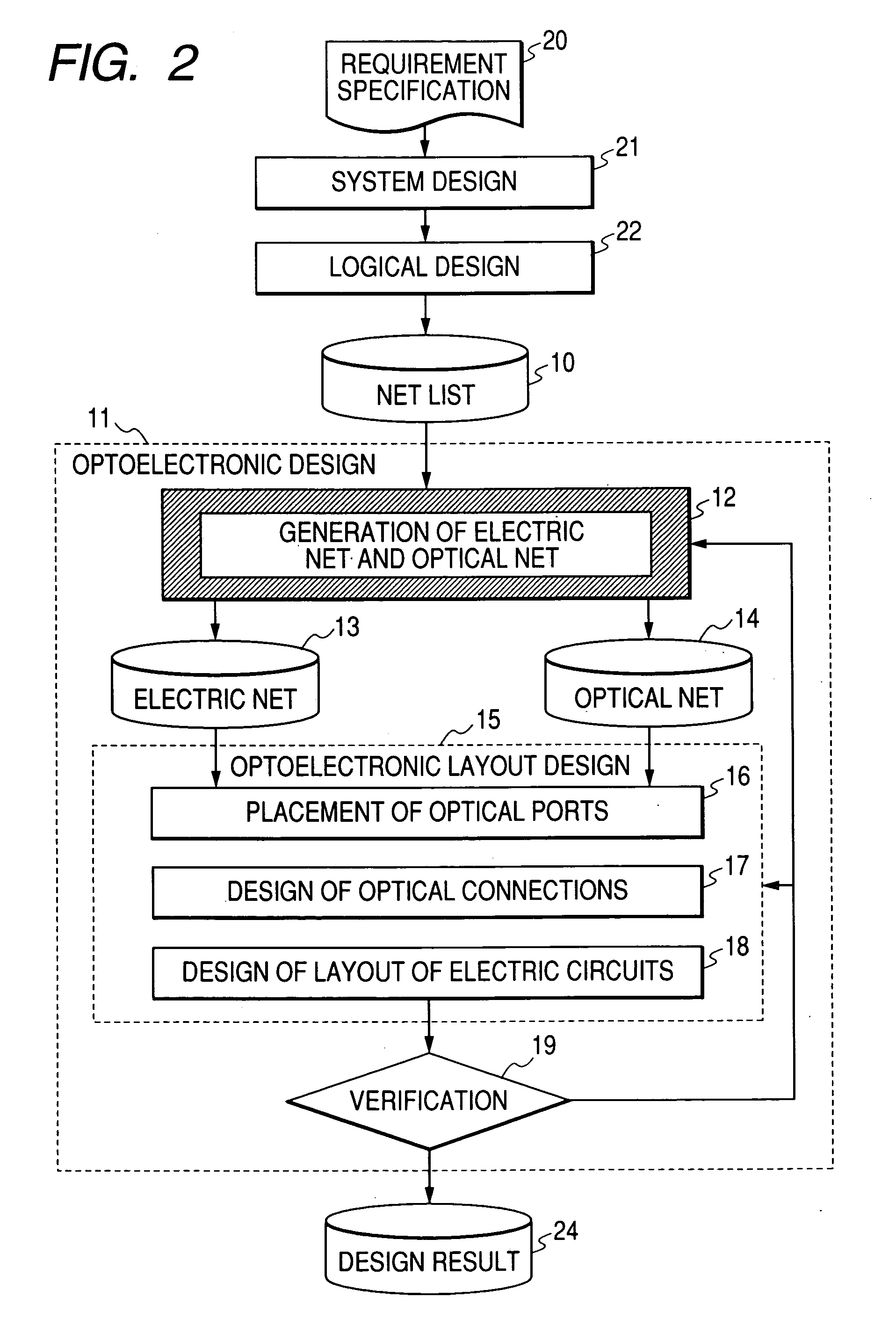Method, device and computer program for designing a circuit having electric wires and optical connections
a technology of optical connections and circuits, applied in the direction of cad circuit design, optical elements, instruments, etc., can solve the problems of circuits that need further improvement in terms of high speed operation and circuit size, circuits that have electrical wire delays, etc., to achieve high reliability, short period of time, and high-efficiency optoelectronics
- Summary
- Abstract
- Description
- Claims
- Application Information
AI Technical Summary
Benefits of technology
Problems solved by technology
Method used
Image
Examples
example 1
[0121] In this example, a reconfigurable optoelectronic circuit is used as hardware and the above-described optoelectronic layout technique is applied to the automatic design of the circuit. The reconfigurable optoelectronic circuit as used herein is a circuit where reconfigurable electronic circuits (FPGAs) 107 as shown in FIG. 5A and flexible optical circuits using planar or two-dimensional (2D) optical waveguides (sheet-shaped optical transmission mediums) 101, which will be described in greater detail hereinafter, coexist as mixture.
[0122] Reconfigurable electronic circuits including FPGAs tend to require longer time and higher cost for optimizing the design as a result of the efforts for raising the scale and the degree of integration because of the increased influence of electric wiring delay that come to intervene. On the other hand, systems that need to be reconfigurable on a real time basis are required to be designed in a short period of time. Additionally, while techniqu...
example 2
[0181] In this example, a circuit having ASICs (custom chips) along with FPGAs and memories for hardware is designed. As in the case of Example 1, the basic structure of the optoelectronic circuit of this example is illustrated in FIG. 6. A major restriction of this example is to use custom chips. Other restrictions for the hardware include that the maximum number of FPGA chips is four (4), that of electric wiring layers is ten (10) while the number of optical connection layers is one (1) and that of optical ports is sixteen (16).
[0182] The difference of scope of design between Example 2 and Example 1 will be described below.
[0183] While the details of the insides of the FPGAs and the optical module are variable in Example 1, the placement of the chips and the optical ports is fixed. More specifically, a predefined reconfigurable system which is an optoelectronic circuit comprising nine FPGAs and nine optical ports is optimally designed in Example 1. Additionally, the positions of...
example 3
[0197] Hardware of the type illustrated in FIGS. 9A and 9B is used in Example 3. Referring to FIGS. 9A and 9B, there are shown a substrate 100, an optical transmission medium 101, optical ports 102, light 103 being transmitted, an electric wiring layer 105 and semiconductor chips 107 (107a through 107d) (while electric wiring layer 105 contains electric wires, they are not shown). In FIGS. 9A and 9B reference symbols 107a, 107b, 107c denote FPGAs and reference symbol 107d denotes a custom chip. FIG. 9A is a plan view and FIG. 9B is a cross sectional view that corresponds to FIG. 9A.
[0198] In this example, the optical module having an optical transmission medium 101 and optical ports 102 is arranged in an area of a part of the substrate and semiconductor chips 107 are arranged in the remaining area. As restriction, the optical module is handled as part and no semiconductor chip can be arranged there. Since an electric wiring layer is provided separately, electric wires can be arrang...
PUM
 Login to View More
Login to View More Abstract
Description
Claims
Application Information
 Login to View More
Login to View More - R&D
- Intellectual Property
- Life Sciences
- Materials
- Tech Scout
- Unparalleled Data Quality
- Higher Quality Content
- 60% Fewer Hallucinations
Browse by: Latest US Patents, China's latest patents, Technical Efficacy Thesaurus, Application Domain, Technology Topic, Popular Technical Reports.
© 2025 PatSnap. All rights reserved.Legal|Privacy policy|Modern Slavery Act Transparency Statement|Sitemap|About US| Contact US: help@patsnap.com



